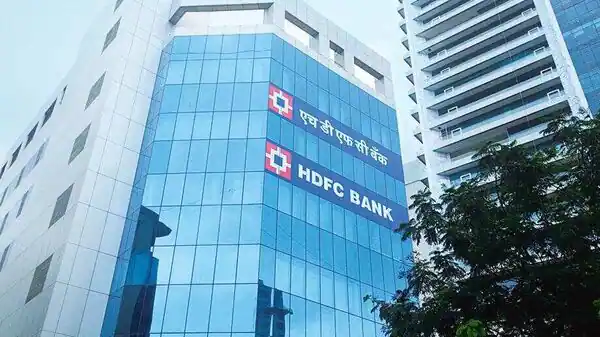[ad_1]
“ ₹2.2-2.3 trillion of HDFC Ltd’s borrowings are from various banks, which needs to be paid off on day one of the merger. This will come from deposits and bonds. Apart from that, at least ₹50,000 crore would also be raised from deposits, which will go towards meeting statutory liquidity ratio (SLR) and capital adequacy requirements (CAR),” said the first person.
_1659294678146.jpg)
View Full Image
Indian rules bar banks from having any borrowing on their balance sheet from any other bank, prompting HDFC Bank to raise funds to repay the loans taken by its home financier parent. HDFC Ltd, a non-banking financial company (NBFC), borrowed from other banks to lend to homebuyers. But, after the merger with HDFC Bank, such borrowings cannot remain on the bank’s balance sheet. Of around ₹5 trillion borrowings in HDFC Ltd’s books, at least ₹2.2 trillion are from various banks.
“This needs to be entirely paid off on the day the merger happens. This ₹2.2-2.3 trillion has to come from long-term public deposits (FDs, term deposits, etc.) and from bonds with tenures of more than three years,” said Ashutosh K. Mishra, head of research-institutional equity at Ashika Stock Broking.
In addition, HDFC Bank will have to raise an additional ₹50,000 crore to fund its SLR and other capital requirements, the people said on condition of anonymity. SLR is the minimum percentage of deposits a commercial bank must maintain in the form of liquid cash, gold or other securities.
“ ₹50,000 crore, too, has to be raised from long-term public deposits and bonds. This is why HDFC Bank has requested a relaxation in SLR and CAR (capital adequacy ratio) calculation. A period of up to three years should be sufficient for the merged entity to raise the total ₹2.7-2.8 trillion for paying off the borrowings existing in HDFC Ltd’s books and comply with the SLR requirement,” Mishra said.
“The rate of interest offered on bonds will decide the time HDFC Bank will take to raise the money for meeting SLR needs and pay off the borrowings of HDFC Ltd,” he added.
Emails sent to spokespeople for HDFC Group and HDFC Bank didn’t elicit any response.
HDFC has written to the Reserve Bank of India seeking exemption from the SLR requirement and allowing the merged entity to comply with the liquidity requirements in a phased manner. However, the regulator is still to respond to the bank, the people said.
Banks need to maintain an SLR of 18% at all times and have a uniform SLR of 25% of the total of their demand and time liabilities as of the last Friday of the second fortnight of a month, according to the Banking Regulation Act, 1949.
To raise public deposits, HDFC Bank is rapidly expanding its branch network. The bank has added 725 branches since last year, taking the total network strength to 6,378.
“On the distribution expansion (front), we added 36 branches during the quarter, and 250 more are in various stages of readiness to be rolled out,” chief financial officer Srinivasan Vaidyanathan told investors on 21 July, after announcing the bank’s June quarter financials. HDFC Bank has deposits of over ₹16 trillion currently.
“HDFC Bank is looking at a total public deposit base of over ₹20 trillion immediately post the merger. Additionally, ₹1.5-2 trillion would be from bonds, a part of which will come from the fresh fundraising being planned for the merger,” said one of the two people cited above.
HDFC Bank has recently decided to fund low-cost homes through the issuance of medium to long-term bonds. This may partly reduce the need for the bank to raise money from public deposits to meet the regulatory requirements on liquidity and reserves.
The bank’s deposits grew 19.2% from a year earlier to ₹16.04 trillion during the June quarter. Retail deposits increased by approximately ₹50,000 crore in the quarter, up 19% from a year earlier. The bank’s capital adequacy ratio is at 18.1%.
Around two decades ago, when ICICI Ltd merged with ICICI Bank Ltd, an exemption on SLR compliance was given by RBI.
The proposed merger of HDFC with HDFC Bank has raised SLR requirements as the balance sheet size of the merged entity will be much bigger than what the standalone bank now has.
While announcing the merger on 4 April, HDFC Bank’s managing director Sashidhar Jagdishan said: “We also plan to ramp up our deposit collection drive in the run-up to the merger.”
The RBI has issued a no-objection certificate for the proposed amalgamation of HDFC and HDFC Bank. The Securities and Exchange Board of India (Sebi), too, has given its in-principle approval for a scheme of amalgamation of various HDFC Group entities as a part of the mega-merger.
HDFC Bank has also requested RBI to relax priority sector lending norms and grandfathering certain assets and liabilities. These are under consideration by the RBI.
After the completion of the merger, HDFC Ltd will acquire a 41% stake in HDFC Bank, and all subsidiaries of the housing financier will be owned by the latter. It will take about 12-18 months for the ongoing merger process to be completed.
Gopika Gopakumar contributed to the story.
Download The Mint News App to get Daily Market Updates & Live Business News.
More
Less
[ad_2]
Source link








